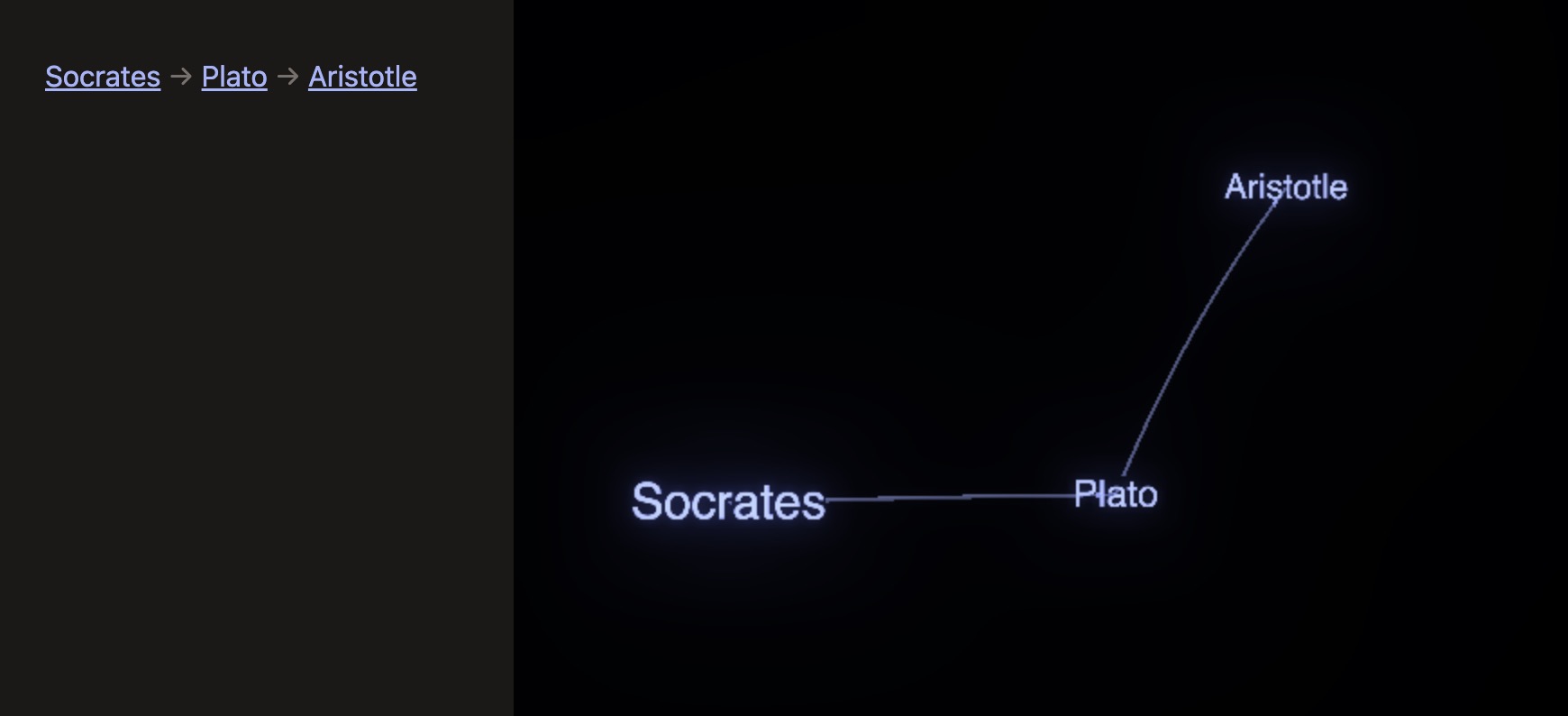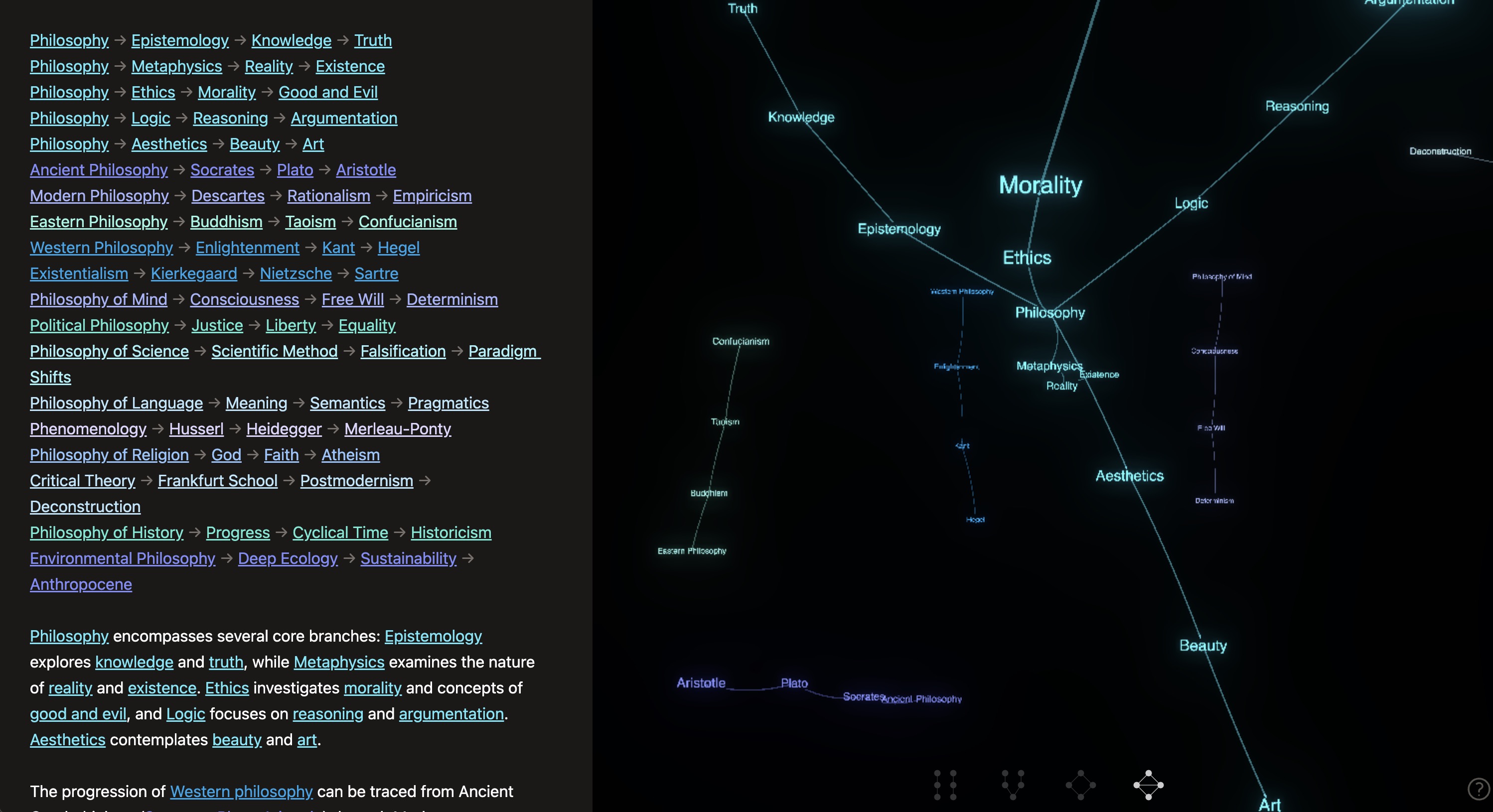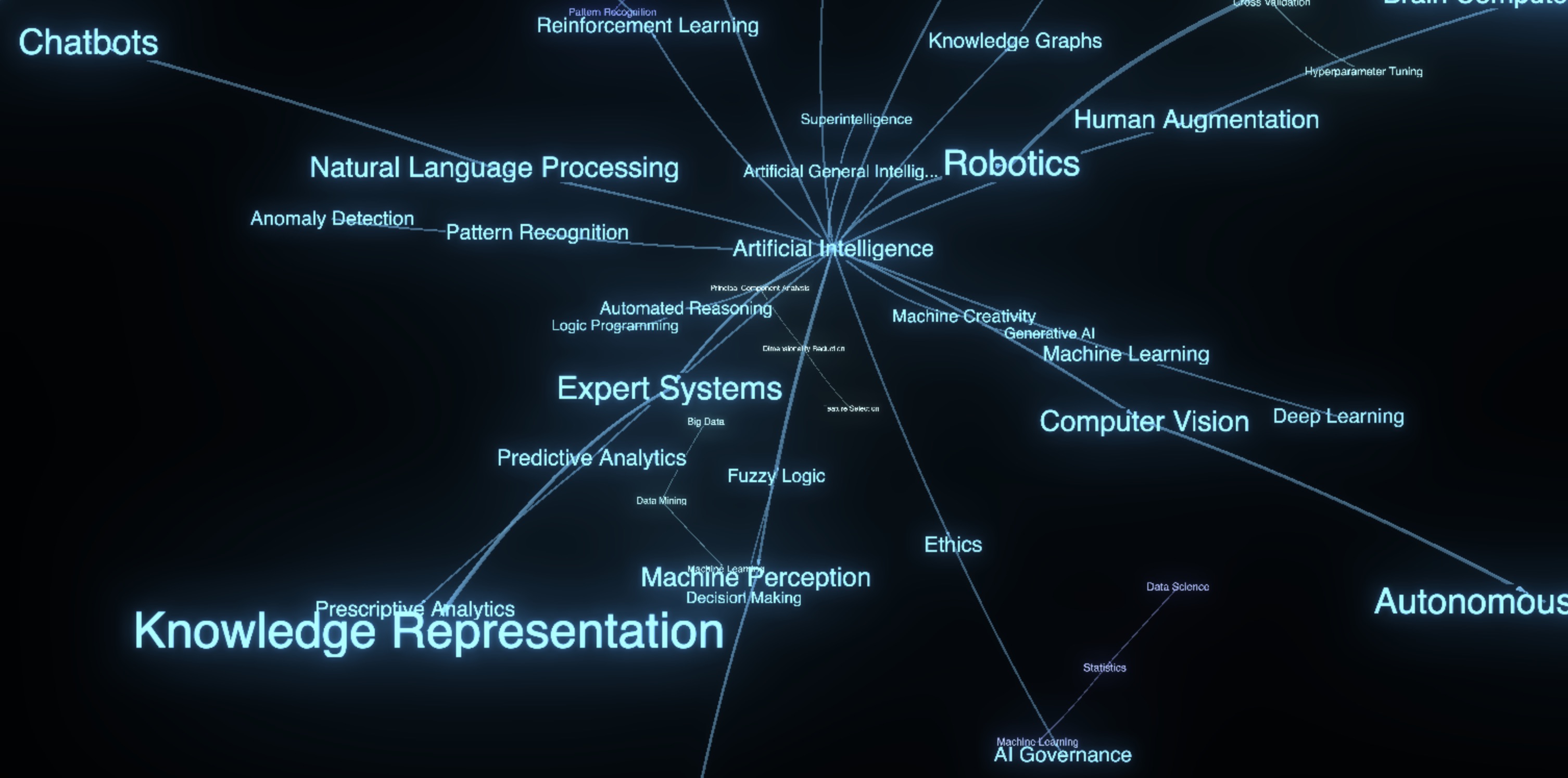From Memex to Think Machine: The Evolution of Knowledge Management
Learn how the Memex, Hypertext and Mind Maps converged into a new kind of knowledge management
In today's digital age, we're drowning in information. The challenge isn't finding data—it's making sense of it all. Enter Think Machine, a revolutionary tool that's changing how we brainstorm, organize, and visualize complex ideas.
But to truly appreciate how Think Machine is different, we need to take a journey through the history of knowledge management.
.jpg)
The Seeds of Modern Knowledge Management
Vannevar Bush's Memex: The Original "Thinking Machine"
In 1945, scientist Vannevar Bush proposed a device called the Memex in his essay "As We May Think." This theoretical machine would store and retrieve information, creating "trails" of connected data—a concept that would later inspire modern hyperlinks.
In Think Machine, these trails have evolved into Trail Links, a powerful feature that allows you to create paths through your ideas. For example, you might create a trail like "Socrates → Plato → Aristotle" to connect these philosophical figures:

The Birth of Hypertext and the World Wide Web
Fast forward to the 1960s, when Ted Nelson coined the term "hypertext," envisioning a world of interconnected information. This idea laid the groundwork for Tim Berners-Lee's World Wide Web in 1989, forever changing how we access and share information.
In Think Machine, hypertext has evolved into a Markdown superset called General Schematics. This powerful language allows you to create complex knowledge structures with simple syntax. The deep interconnectedness of information is implemented as the Interwingle feature, which lets you adjust the complexity of connections in your knowledge network.
The Digital Age: Information Overload
As the internet has exploded with content and AI has gotten really powerful, we need something that can help handle the complexity. Something that is simple, intuitive, but capable at handling real world information. This is where Think Machine steps in, offering a multidimensional approach to knowledge management.
Think Machine: The Next Evolution in Knowledge Management
Think Machine isn't just another digital tool—it's a paradigm shift in how we interact with information. Let's explore its core innovations:
1. 3D Mind Mapping and Visualization
Think Machine brings your ideas to life in three dimensions. Unlike traditional 2D mind maps, our 3D mind mapping software allows for depth-enhanced ideation. This spatial thinking tool helps you see connections and patterns that might be missed in a flat layout.
The 3D visualization isn't just for show—it's a powerful way to represent complex relationships.
2. AI-Powered Research Assistant
Our Wayfinder AI takes the grunt work out of information gathering. It's like having a tireless research assistant who can sift through vast amounts of data, suggesting connections and insights you might have missed.
Wayfinder AI doesn't just search your notes—it understands the context of your research. For example, if you're exploring ancient Greek philosophy, it might suggest connections between Plato's Theory of Forms and modern concepts in quantum physics, bridging gaps you might not have considered.
3. Cascading Contexts for Flexible Organization
Think Machine introduces the concept of Cascading Contexts, allowing ideas to have different meanings in different contexts. This feature is perfect for 3D brainstorming techniques, especially when dealing with complex ideas that don't fit neatly into traditional categories.
For instance, the term "apple" might be connected to "fruit" in a botanical context, "technology" in a business context, and "Newton" in a physics context. Cascading Contexts allows all these connections to coexist, giving you a richer, more nuanced view of your knowledge.
4. InstaCartography: Automatic Map Creation
One of our most exciting features is InstaCartography, which automatically creates 3D concept maps from your notes. This AI-powered 3D brainstorming tool transforms your scattered thoughts into structured, visual knowledge landscapes.
Imagine writing a series of notes about climate change, and with a single click, seeing those notes transformed into a comprehensive 3D map showing the relationships between greenhouse gases, policy decisions, and ecological impacts. That's the power of InstaCartography.
Real-World Applications of Think Machine
Academic Research and Literature Reviews
Researchers and students can use Think Machine's interactive knowledge graphs to simplify complex research topics. It's particularly useful for literature reviews, helping to uncover hidden connections between different studies and theories.
For example, a doctoral student in neuroscience might use Think Machine to map out the latest research on neuroplasticity, visually connecting studies from various sub-fields and instantly seeing gaps in the current literature.
Project Management and Team Collaboration
Think Machine shines in collaborative environments. Our 3D collaborative brainstorming tools allow teams to engage in interactive 3D brainstorming sessions, fostering creativity and innovation.
A software development team could use Think Machine to plan a new app, with different layers representing user interface, backend logic, and data structure. Team members can add notes, link related concepts, and even use the AI to suggest potential challenges or opportunities they might have overlooked.
Personal Knowledge Management and Lifelong Learning
For individual users, Think Machine serves as a powerful networked note-taking system. It's the perfect tool for spatial note-taking and organizing your personal knowledge base in a way that enhances recall and understanding.

A lifelong learner studying multiple languages could use Think Machine to create a 3D map of linguistic concepts, with each language occupying a different space and connections showing similarities in grammar or vocabulary across languages.
See how Think Machine is used in Education, Research, Knowledge Work and Business.
The Future of Knowledge Management
As we look to the future, AI is poised to revolutionize fields like education, research, and innovation. Think Machine is pushing the boundaries of what's possible in 3D visualization and AI-assisted thinking, enabling these fields to make the most of advanced knowledge management.
Conclusion: Your Personal GPS for the World of Ideas
From Bush's Memex to today's Think Machine, we've come a long way in how we manage and interact with information. Think Machine isn't just a tool—it's your personal GPS through the vast landscape of knowledge.
Think Machine is inspired by many of the oldest and newest ideas in computing and knowledge management:
-
Vannevar Bush publishes As We May Think, imagining Thinking Machines that amplify and augment human ability. A core idea is the Memex, a memory extension device that uses trails as high-level concepts through the system.
-
Ted Nelson coins hypertext, and imagines visual two way links in a world where information is deeply interconnected.
-
Douglas Engelbart performs The Mother of all Demos and showcased modern tools, including a multi-modal hypertext system.
-
Tim Berners-Lee invents the WWW, and imagines an editable and semantic web.
-
John Gruber releases Markdown, a human friendly way to write HTML.
-
Stephen Wolfram begins work on a Fundamental Theory of Physics. A computational Universe built on a structureless structure, the hypergraph.
-
OpenAI releases ChatGPT, a calculator for words. LLMs, Embeddings and Vector search get really good.
By combining the trail-blazing vision of the Memex, the interconnectedness of hypertext, and the power of modern AI and 3D visualization, Think Machine offers a truly next-generation approach to knowledge management.
Ready to transform how you think and create? Explore Think Machine today and join the evolution of knowledge management.


